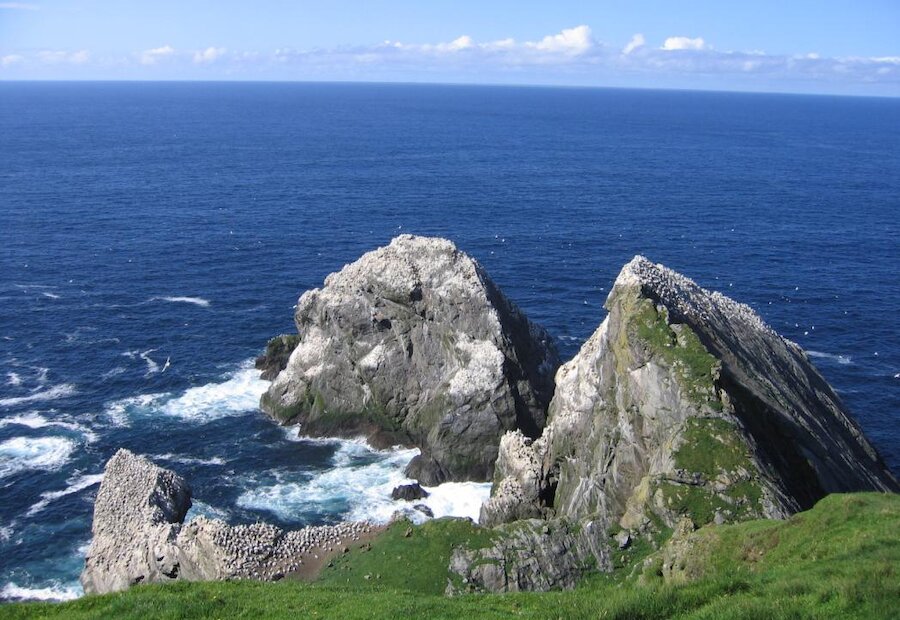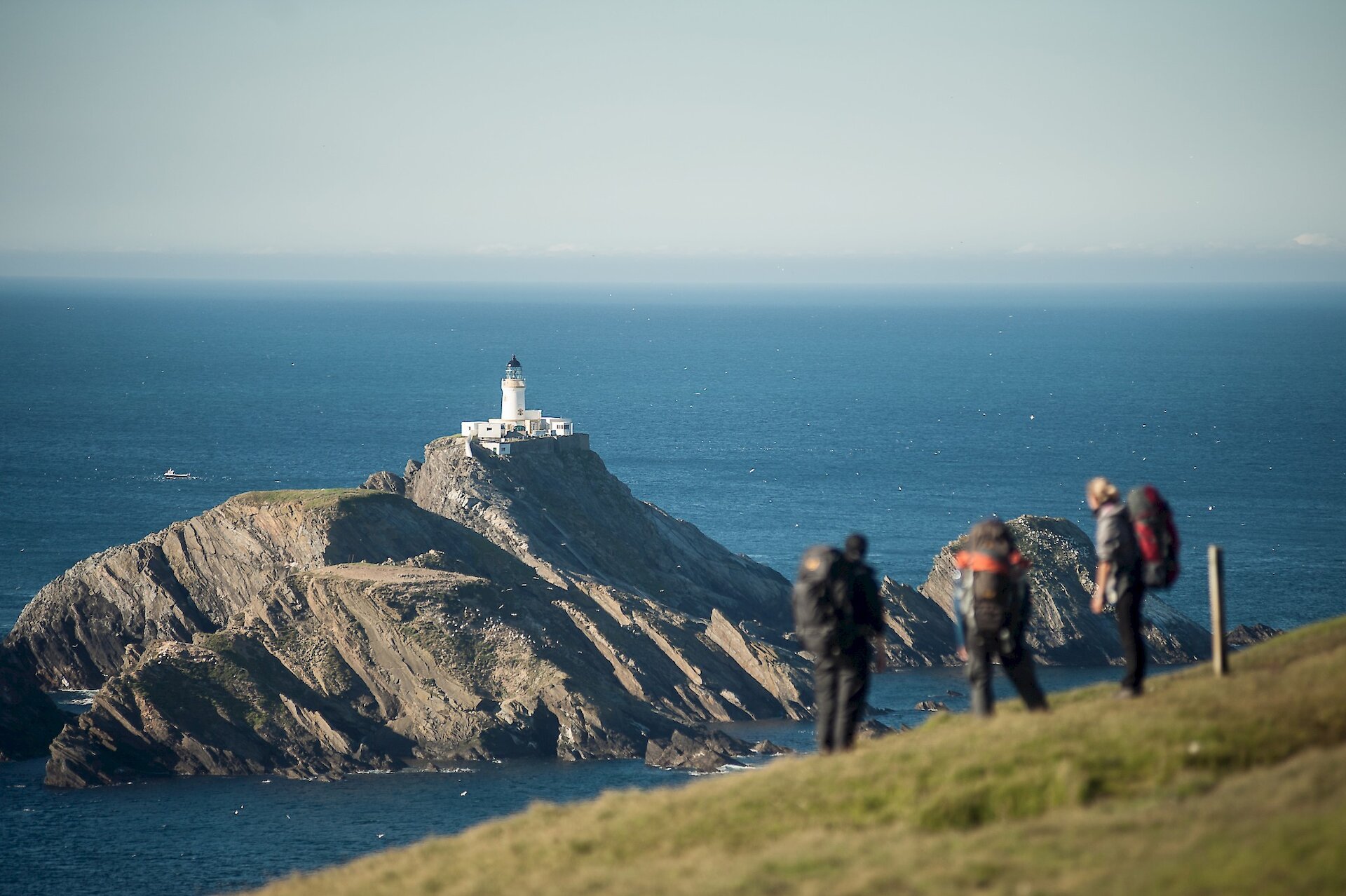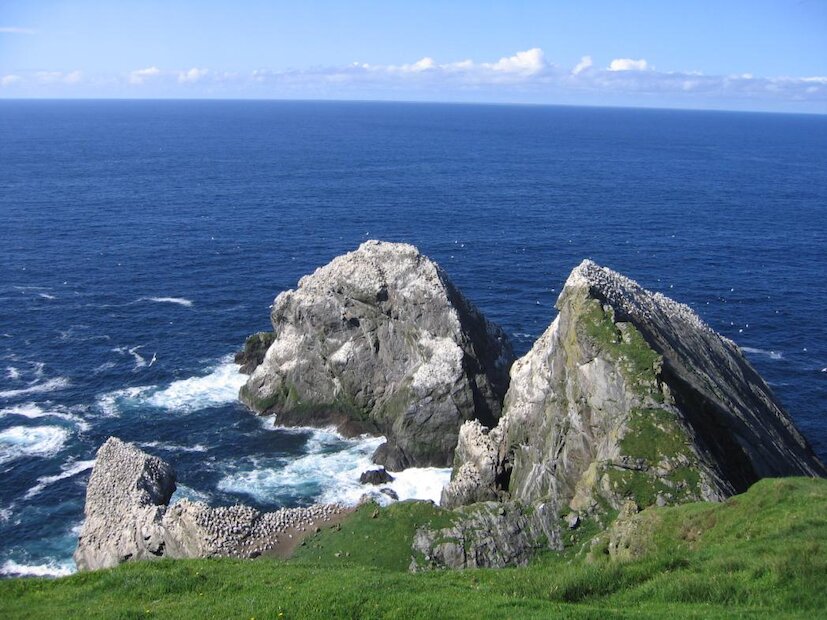The return walk direct to Hermaness takes about three hours but can be extended south-west along the coast to Saito by ascending Neap; you should allow at least another hour for this.
The start point for the walk is the car park for Hermaness National Nature Reserve. New facilities were unveiled in May 2022 including a welcoming visitor hub with information points, toilets and improved car parking. The toilets are open daily from 1st May to 30th September. (Not suitable for disposal of campervan waste).
From the car park, follow the path north to Winnaswarta Dale, where a new recycled plastic boardwalk leads you across the reserve to the western cliffs. The path was installed in spring 2022 and is designed to preserve the fragile blanket bog vegetation and is routed to avoid nesting birds and other wildlife.
The blanket bog records over 7,000 years of vegetation history at Hermaness and provides nesting habitat for Red-throated Diver, Snipe, Dunlin and Golden Plover. In summer Shetland’s annual ‘pirate’ visitor, the Bonxie (Great Skua), favours this reserve with almost 1000 pairs nesting here. Bonxies breed from May to August before migrating south in the winter some perhaps as far as West Africa.
The path reaches the cliff top at Toolie, offering spectacular views of the rugged coastal landscape and the vastness of the Atlantic Ocean. From here you may wish to take a detour to the south as far as Saito and experience the sight (and smell) of the gannet colony on the 170 metre (600 foot) cliffs of the Neap. Over 25,000 pairs of gannets, Britain’s largest seabird, return to Hermaness each year to lay their single eggs in nests built of seaweed cemented with guano. The cliffs also reveal some of Hermaness’ spectacular geology with contorted veins of pink granite weaving through grey gneiss, formed 600 million years ago as a result of intense heat and pressure on what were once quartz rich sands.



